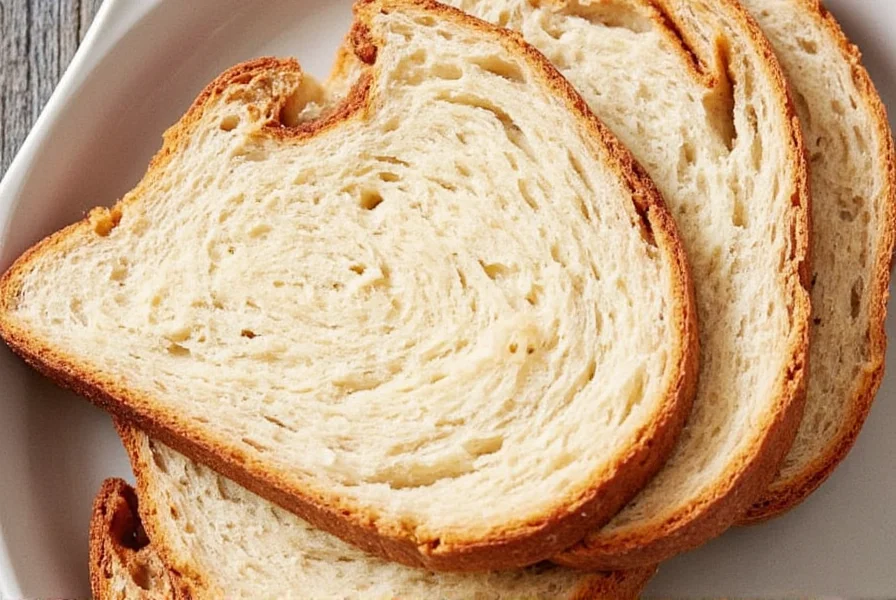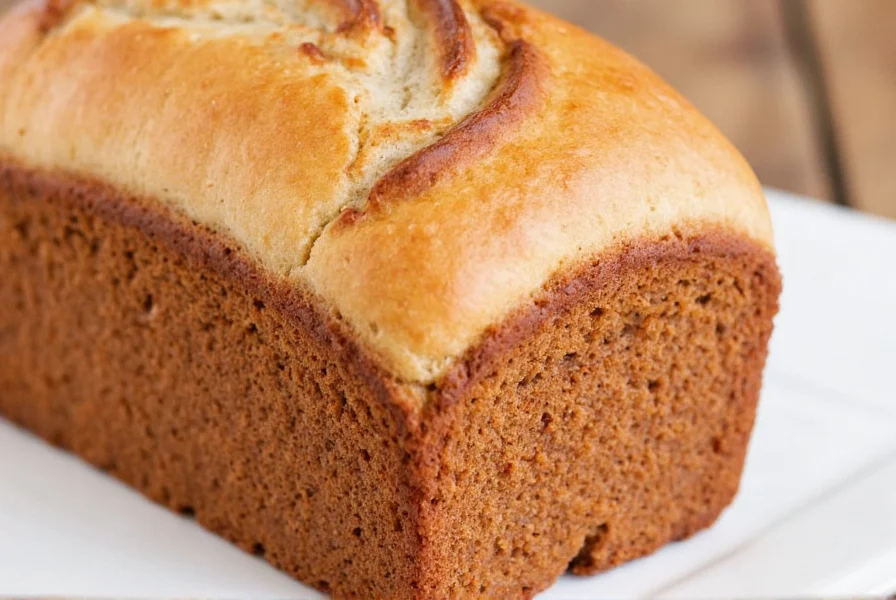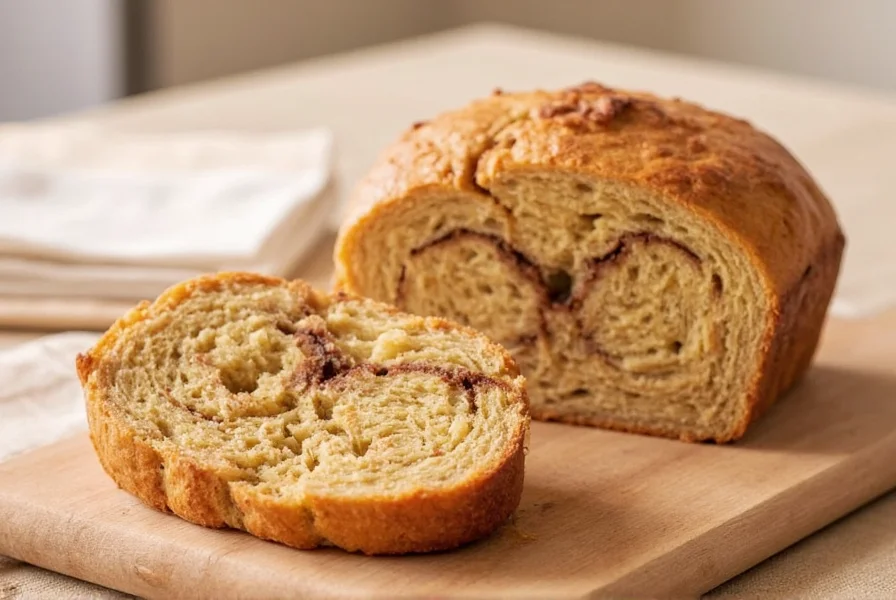Creating perfect cinnamon bread requires understanding the delicate balance between dough texture and flavorful filling. This comprehensive guide delivers time-tested techniques for achieving bakery-quality results in your home kitchen, whether you're a beginner or experienced baker.
Essential Ingredients for Perfect Cinnamon Bread
The foundation of any easy cinnamon bread recipe starts with quality ingredients. All-purpose flour provides structure, while bread flour creates a chewier texture. Fresh yeast or instant yeast both work well, though instant yeast requires no proofing. Whole milk adds richness, while butter contributes to both flavor and tender crumb.
The cinnamon filling deserves special attention—use genuine Ceylon cinnamon for its complex flavor profile rather than cassia, which can be overly harsh. Brown sugar creates a moist, caramel-like swirl, while a touch of cornstarch prevents the filling from making the bread soggy during baking.
| Ingredient | Function | Substitution Options |
|---|---|---|
| Active Dry Yeast | Rising agent | Instant yeast (use 25% less) |
| Whole Milk | Richness and tenderness | Half-and-half or plant-based milk |
| Unsalted Butter | Flavor and texture | Margarine (affects flavor) |
| Ceylon Cinnamon | Signature flavor | Cassia cinnamon (use less) |
Step-by-Step Classic Cinnamon Bread Recipe
Follow these detailed instructions for a best cinnamon bread from scratch that delivers consistent results:
Dough Preparation
- Warm 1 cup whole milk to 110°F (not exceeding 115°F) and dissolve 2¼ teaspoons active dry yeast with 1 tablespoon sugar
- In a separate bowl, combine 4 cups all-purpose flour, ¼ cup sugar, 1 teaspoon salt, and 1 beaten egg
- Mix in ⅓ cup softened butter and the yeast mixture
- Knead for 8-10 minutes until smooth and elastic (use stand mixer with dough hook for 5-7 minutes)
- Place in greased bowl, cover, and let rise until doubled (1-1½ hours)
Creating the Cinnamon Swirl
- Roll risen dough into 16x12 inch rectangle on floured surface
- Spread ⅓ cup softened butter evenly over dough
- Mix ½ cup brown sugar with 2 tablespoons Ceylon cinnamon and 1 tablespoon cornstarch
- Sprinkle sugar mixture evenly over buttered dough
- Tightly roll dough from long side, pinch seam to seal
- Place seam-side down in greased 9x5 inch loaf pan
- Cover and let rise 45-60 minutes until dough crowns 1 inch above pan
- Bake at 350°F for 30-35 minutes until internal temperature reaches 190°F

Common Cinnamon Bread Mistakes to Avoid
Even experienced bakers encounter issues with cinnamon swirl bread recipe attempts. Understanding these common pitfalls ensures success:
- Overfilling with cinnamon mixture - Excess filling creates gaps and prevents proper rising. Stick to the recommended ½ cup brown sugar mixture.
- Rolling too tightly - This compresses the dough and restricts rising. Roll firmly but gently for even layers.
- Incorrect oven temperature - Use an oven thermometer to verify accuracy; most home ovens run hot or cold.
- Under-kneading the dough - Proper gluten development creates structure; don't rush the kneading process.
- Cutting too soon - Allow bread to cool in pan for 10 minutes, then transfer to wire rack for complete cooling (1-2 hours).
Variations for Different Dietary Needs
Adapt this soft cinnamon bread recipe for various dietary requirements without sacrificing flavor:
Gluten-Free Version
Substitute all-purpose flour with 4 cups gluten-free bread flour blend containing xanthan gum. Add 1 extra egg white to improve structure. Let dough rest 10 minutes after mixing to allow flours to hydrate fully before kneading.
Vegan Adaptation
Replace dairy milk with unsweetened almond milk, butter with vegan butter sticks, and eggs with flax eggs (1 tablespoon ground flaxseed + 3 tablespoons water per egg). Use organic cane sugar to ensure no bone char processing.

Storage and Serving Recommendations
Proper storage maintains your homemade cinnamon bread instructions success. Store cooled bread in airtight container at room temperature for up to 3 days. For longer storage, wrap tightly in plastic wrap and freeze for up to 3 months.
Revive frozen bread by thawing at room temperature for 2 hours, then warming in 300°F oven for 10 minutes. Serve with softened butter or cream cheese spread. This classic cinnamon bread recipe also makes excellent French toast when slightly stale.
Troubleshooting Your Cinnamon Bread
Address common issues with these expert solutions:
- Dense texture - Usually indicates under-proofed dough or too much flour. Measure flour by spooning into cup and leveling, don't scoop directly.
- Collapsed center - Often caused by over-proofing or opening oven door too early. Maintain consistent oven temperature.
- Filling leakage - Prevent by ensuring butter layer is thin and even, and cinnamon mixture contains cornstarch.
- Pale crust - Brush top with egg wash (1 egg + 1 tablespoon water) before baking for golden finish.
Frequently Asked Questions
Can I make cinnamon bread without yeast?
Yes, you can create a quick bread version using baking powder and baking soda as leaveners. Replace the yeast dough with a batter made from 2 cups flour, 1½ cups sugar, 2 teaspoons cinnamon, 1½ teaspoons baking powder, ½ teaspoon baking soda, and ½ teaspoon salt. Mix with 2 eggs, 1 cup buttermilk, and ⅓ cup melted butter. Swirl with cinnamon-sugar mixture and bake at 350°F for 45-50 minutes.
Why does my cinnamon bread collapse in the center?
Center collapse typically occurs from over-proofing (letting dough rise too long), opening the oven door during the first 20 minutes of baking, or under-baking. Ensure dough rises only until doubled in size, avoid temperature fluctuations during baking, and verify internal temperature reaches 190°F before removing from oven.
How can I prevent the cinnamon filling from leaking out?
Prevent filling leakage by using the right ratio of ingredients (include 1 tablespoon cornstarch per ½ cup brown sugar), spreading butter in a thin, even layer, and rolling the dough tightly but not excessively. Pinch the seam securely and tuck the ends under before placing in the pan.
What's the difference between cinnamon bread and cinnamon rolls?
Cinnamon bread is baked as a single loaf with the cinnamon swirl running lengthwise through the entire loaf, while cinnamon rolls are individual portions cut from rolled dough before baking. Bread has a more uniform texture throughout, while rolls have more exposed swirl surface area and often include icing.
Can I prepare cinnamon bread dough ahead of time?
Yes, you can refrigerate shaped dough after the final rise for up to 18 hours. Cover tightly with plastic wrap and refrigerate. When ready to bake, remove from refrigerator 30 minutes before baking to take the chill off, then bake as directed. You may need to add 5-7 minutes to the baking time.











 浙公网安备
33010002000092号
浙公网安备
33010002000092号 浙B2-20120091-4
浙B2-20120091-4